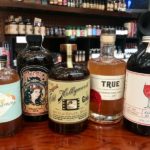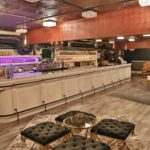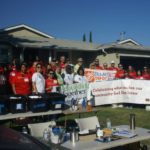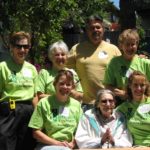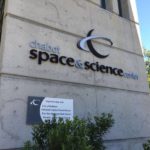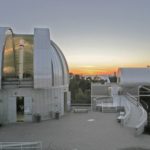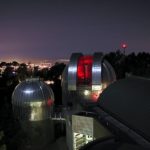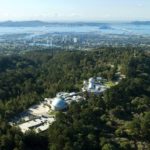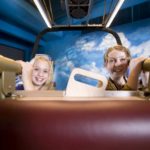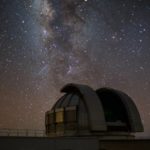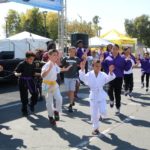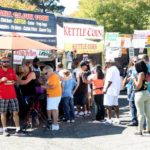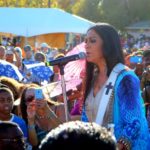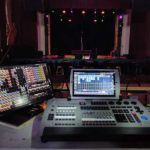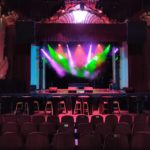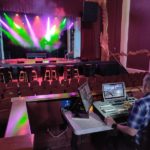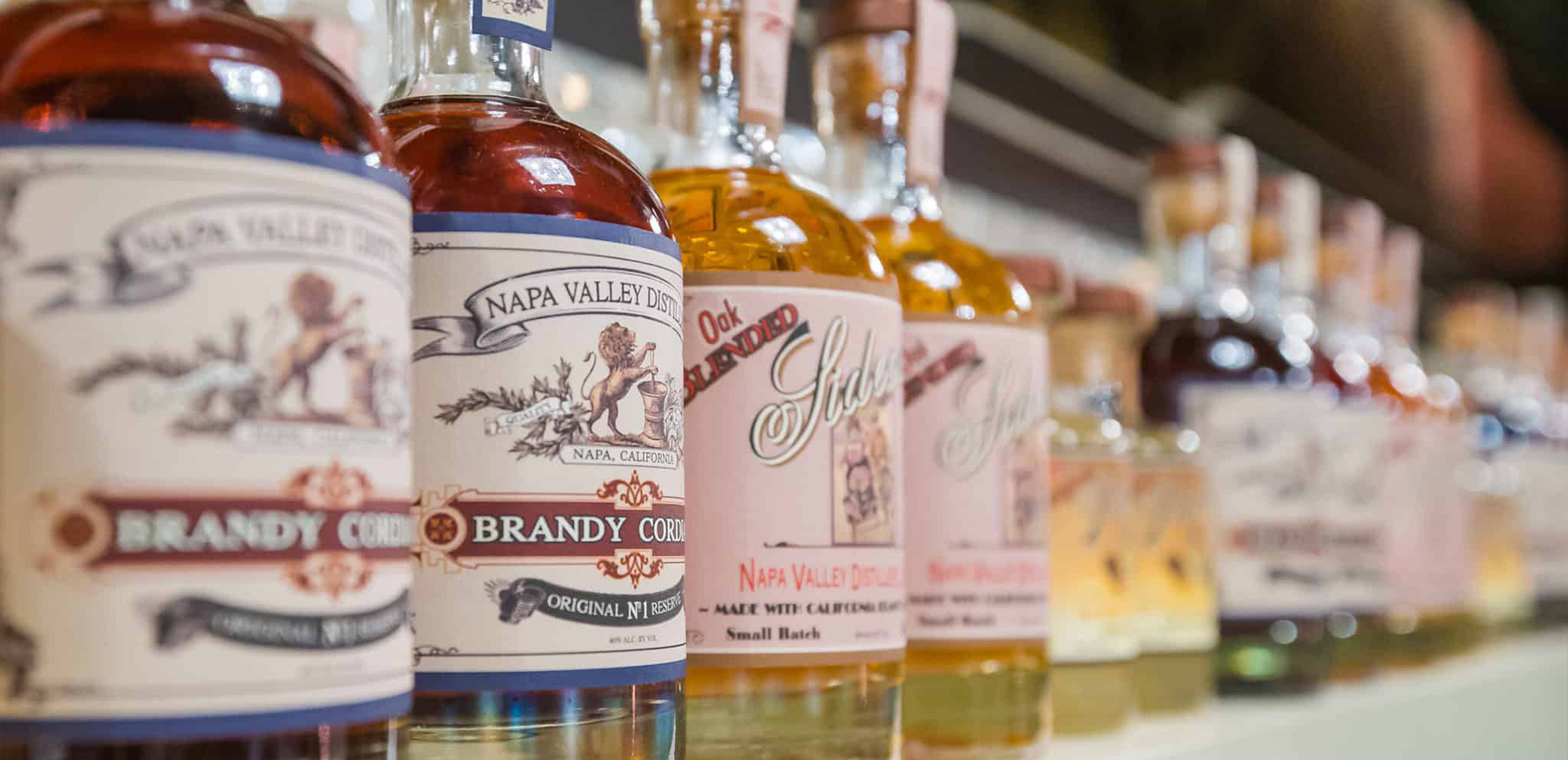
Recrafting the craft cocktail
By Nate Gartrell
Ten years ago, Napa Valley couple Arthur and Lusine Hartunian took what was likely the biggest risk of their lives: they opened a distillery in the heart of wine country. It was after the Great Recession had forced Arthur out of the insurance industry, in a time when Americans stopped going out as much to save money, and in a state that at the time did not permit the type of drinking establishment the Hartunians envisioned.
“My wife and I did about six minutes of research and jumped right in with money we didn’t have,” Arthur recalled in a recent interview. “There was definitely a bit of a learning curve.”
Despite the odds, nowadays Arthur and Lusine continue to benefit from that decision. They’ve grown their venture, the Napa Valley Distillery, into a household name around the city, and they are weeks away from opening an in-house restaurant called The Hollywood Room. They’ve also started a sister company, Napastak, a cooking and kitchenware boutique.
“We almost went out of business two dozen times in the first couple years,” Arthur said. “We were late on rent, no way to make money because laws at that time didn’t allow [distilleries] to sell direct to consumer, you had to go through a distributor … for years I was going door-to-door, trying to sell one bottle at a time.”
The Napa Valley Distillery crafts its own whiskey, gin, and vodka, but from the beginning, Arthur saw his company as more than just producers of liquor.
“We’re a cocktail company,” Arthur said. “We’re more about hospitality in a way that’s based around spirits. We pride ourselves on accommodating our customers … We’re open every day but Wednesday, but if someone were to walk in on a Wednesday we wouldn’t turn them away, we would make it work somehow.”
Arthur’s interest in spirits started off, fittingly, with an interest in cocktails.
“One of my first jobs out of school was working at a law firm on Hollywood Boulevard…Every night the two partners would go to a restaurant bar downstairs and have cocktails and meet with other lawyers,” Arthur said. “They would have negronis and old fashioned’s, and these were way out of date cocktails at that time.
“I became fascinated by cocktail history, cocktail culture,” he continued. “It wasn’t about drinking to get drunk; it was about enjoying the flavors and the social aspect of the drink.”
It was a world that felt very familiar, Arthur said, given his Armenian heritage. “Armenians rarely eat without drinking and we rarely drink without eating,” he said. “Drinking is really part of our culture, but it’s a cultural instrument, a social tool.”
Arthur became a self-described “cocktail geek.” He started studying bartending not at college, but through research at his local library. Distilling and mixing drinks became a side hobby while he focused on his day job in the insurance industry.
“I never went to bartending school, but I think I can hold my own with the best,” he said. “I was very, very in love with that industry.”
In carving his path to success, Arthur took on the state laws that he argued were holding back artisan distilleries like his. In 2012, he and several other distillery owners formed the California Distillers Guild and started lobbying for the state to pave the way for spirit tasting rooms. The following year, then-Gov. Gerald Brown signed AB 933, allowing distilleries to have tasting rooms, similar to wineries and breweries. In 2018, the guild championed SB 1164, known as the Craft Distillers Act, eliminating a legality that required visitors to distilleries to participate in a tasting event before buying a bottle of liquor, which Arthur and others argued handcuffed small-scale distilleries. The law also expanded the amount craft distilleries could produce annually by 50,000 gallons.
“We were basically fighting for our right to exist; and through sheer determination and work, we were able to get our bill passed,” Arthur said. “It was the first piece of [state] legislation since 1933 regarding distilled spirits.”
The Napa Valley Distillery was formed in 2009, three years before state regulations would loosen. Those years were “very emotional,” Arthur said, and the life he’d left was always looming in the background; Arthur had been in the insurance business in Fresno County.
“I hated what I was doing, but I was good at it,” Arthur recalled.
When one of his biggest clients, AIG, folded during the partial economic collapse in 2008 and 2009, his company folded. Around the same time, Arthur turned 40 and began to reevaluate his life.
“I decided right then that I was going to start doing something that I loved. I didn’t even know that we couldn’t do tasting rooms; I did almost no research, and we dove right in,” Arthur said. “For those first few years, I can’t tell you how many times I said to myself, ‘What did I do?’ But the alternative was, I had to go back and sell insurance.”
“My wife kept pushing and encouraging me; she had a lot to do with why we kept going,” he continued. “We just worked together as a team and made it work until the laws changed.”
Since the laws changed things have been great. They’re now open in two locations and started a bar club that has approximately 3,000 members across the state.
In late October, Arthur and Lusine are set to open The Hollywood Room, a restaurant and bar with a theme that’s a tip o’ the cap to the neighborhood where Arthur fell in love with “cocktail culture.”
“There will be a full restaurant and bar with cocktails, beer, and wine … our spirits and other spirits we love,” Arthur said. “We’ll be the first distillery in California to do this. We’re looking forward to it. It has been a dream of mine … I’m pursuing a passion; that’s really the best way to put it.”
The Hollywood Room will also have available “about 50 screenplays” for anyone who wants to thumb through them while they’re awaiting their meal or their “elevated cocktail experience,” Arthur said.
“Everything from Casablanca to Pulp Fiction,” he said. “It will be a tribute to the last 60 years of Hollywood.”
So, what does Napa’s cocktail geek recommend first-timers try?
“I’m a gin and tonic guy all the way,” Arthur said with a laugh. “Don’t get me wrong, I love each one; I’m an equal-opportunity drinker. But I love gin and tonic because each one is different.”
“I’m really enjoying spritzes right now,” he added. “Those low ABC cocktails with lots of flavor—those are easy to drink—they’re good with food, before food, or after food.”
The Napa Valley Distillery has two locations in Napa: The Tasting Salon and Bar Shop, located at the Oxbow Public Market at 601 1st Street, #8. Their Grand Tasting Salon and Event Center are located at 2485 Stockton Street, which will also be the home of the Hollywood Room.
The Stockton Street location is open from 11 a.m. to 7 p.m. on Monday, Tuesday, Thursday, Friday and Saturday, and from 11 a.m. to 6 p.m. on Sundays. It is closed on Wednesdays. The 1st Street location is open every day of the week, from 9 a.m. to 8 p.m., Monday through Saturday, and from 9 a.m. to 7 p.m. on Sundays. For additional information, visit their website at napadistillery.com, or call them at (707) 265-6272. You can also follow them on Facebook by visiting and “liking” their page: facebook.com/NapaDistillery.
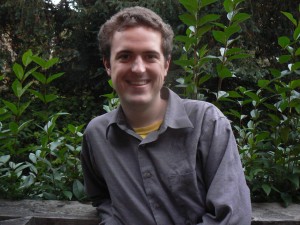
Nate Gartrell grew up in Benicia, studied journalism in college, and has written for a handful of media outlets since age 15. He aspires to visit all 30 Major League Baseball stadiums and to hit the trifecta at the horse track.
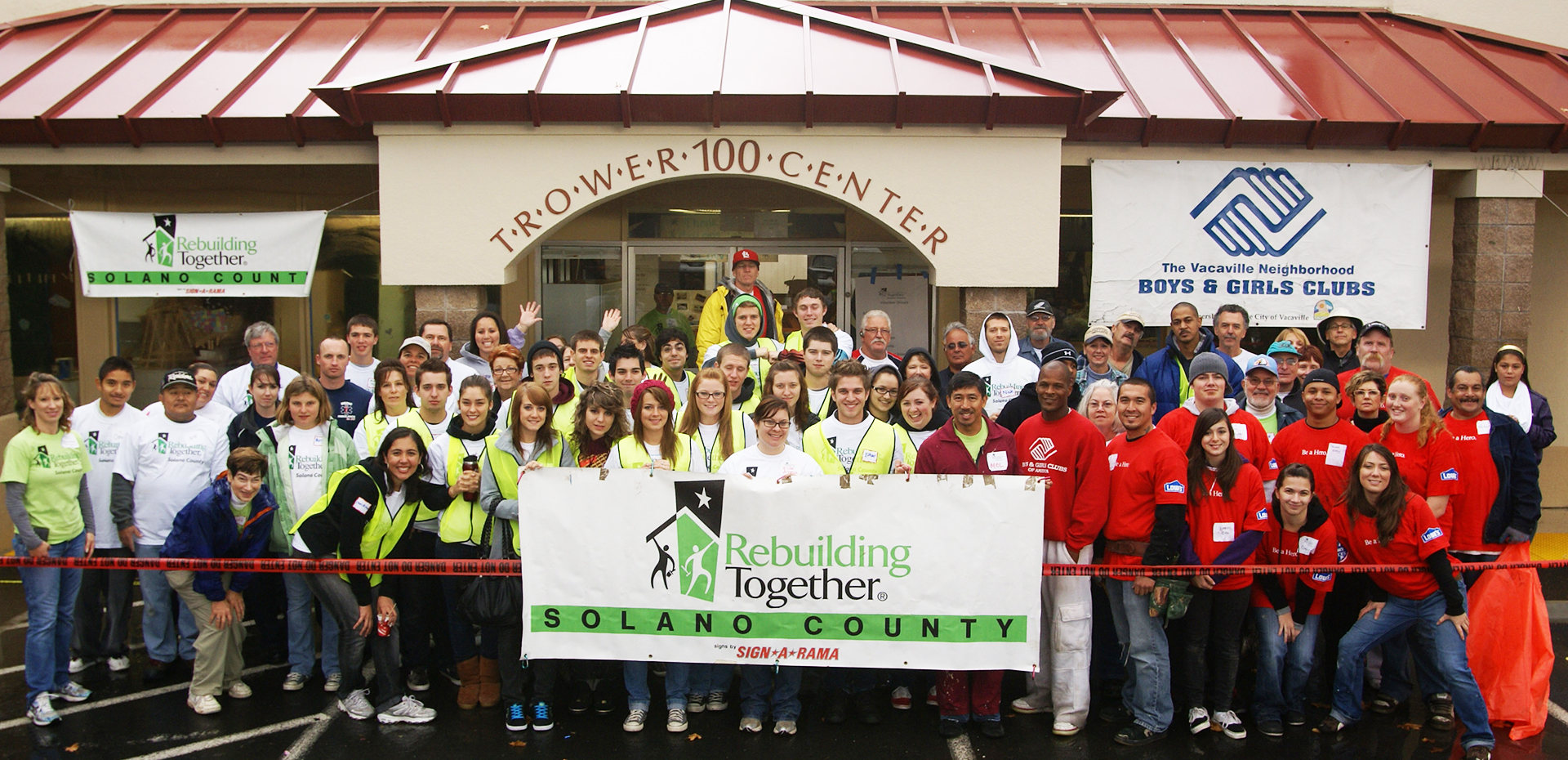
All Hands-on Deck
By James Quinn
It is no secret that a home requires constant upkeep to keep it from dilapidating from weathering and use. This requires lots of money, help, time, patience, and more. Now think bigger—think rebuilding a home—now imagine rebuilding the homes of entire communities!
With the mission of, “repairing homes, revitalizing communities, rebuilding lives,” Rebuilding Together is a standout nonprofit organization made up of thousands of teams of people nationwide (i.e., in 38 states and in DC), volunteering their time and skill to literally rebuild homes (hence the name) and community facilities such as schools. Its website reports that “more than 2.5 million Rebuilding Together volunteers rehabilitated more than 150,000 homes and several hundred community facilities—estimated value of work is more than $1 billion” (rebuildingtogether.org/about-us).
It all started back in April of 1973, according to Rebuilding’s website, “with the simple act of neighbors helping neighbors” of a small group of volunteers in Midland, Texas who wanted to help alleviate a serious problem in their community—neighbors could not afford to fix their homes.” These volunteers quickly noticed the significant impacts of using their time and skills to change not only people’s lives but also whole neighborhoods, so they traditionally met together every year on the last Saturday of April to restore homes. They called it “Christmas in April”—all the meanwhile growing bigger—and by 1988, they officially established themselves as the nonprofit Rebuilding Together, which helped all year round, and their significant national impact has inspired smaller Rebuilding Together groups all over the country—giving rise to our local one: Rebuilding Together Solano County (RTSC).
RTSC’s mission is specific to our own community in assisting low-income homeowners with home rehabilitation projects (e.g., helping out low-income schools, veteran’s buildings, Boys & Girls Clubs of America, etc.), paying special attention to making homes healthy and safe—which they do, for example, by installing free smoke detectors and carbon monoxide detectors that have and continue to save lives (every home should have them). RTSC’s site elaborates: “Our focus is low-income seniors, disabled individuals, and veterans. In addition to home rehabilitation, Rebuilding Together also assists community facilities with needed repairs. During a project, local businesses, community members and concerned residents come together from all walks of life to rehabilitate homes in Solano County. This is accomplished with volunteer skilled and unskilled labor, donated materials/services and financial support from within Solano County.”
And with RTSC’s recent 10-year anniversary in June, it is a great time to reflect back on the organization’s enormous impact: “From June 2009 through December 2018, more than 4,500 Rebuilding Together volunteers have rehabilitated 35 homes for low-income homeowners (seniors / military / disabled) and held more than 45 community facility workdays…[and] has installed more than 1,700 smoke and 425 carbon monoxide alarms benefitting 600 mobile home residents [with the] estimated value of work is more than $5,000,000,” according to its website.
However, those numbers have gone up since then, as I learned from RTSC’s Executive Director Elizabeth Hoffman, who also sits on its board of directors. Hoffman works alongside President Mel Orpilla, Vice President Freda Dill, Legal Counsel Paul Ligda, Treasurer Jennifer Rosendall, and Secretary Linda Daraskavich.
Hoffman said, “We’ve done a little over 2,500 smoke alarms throughout the county, throughout the mobile home parks and installed a little over 500 carbon monoxide alarms … our first home was in 2009—and now we have done a total of 38.” As you can see, to rebuild a home right (safely and following all city ordinances) clearly takes time, even with a lot of people’s money.
Hoffman and I met one Saturday morning at a Vallejo home, and one of the immediate things I noticed was the many volunteers, mostly from Travis Air Force Base. What stood out to me the most, however, was the age range from younger to older volunteers, where a group of well-humored seniors (one was 93) were packing up “to-go bag” lunches for volunteers—there was a job for everyone. “We have everybody, even high school groups who come out and want to volunteer,” Hoffman said. “You do need to be 14 years or older to help us on a construction project [liability], but beyond that, we have Cal Maritime students and more.”
In addition to Hoffman and volunteer groups, what runs RTSC is its many local partnerships, sponsors, donors, and more—because we want to make the same thing when it comes down to it—we want our community to be a better place. “We partner up with companies that will give us some actual cash to be able to get gas in the van, volunteer insurance, volunteer T-shirts … Wells Fargo is a huge sponsor, Phillips 66 [Diversified Energy Manufacturing and Logistics Company], Kaiser Permanente [Vallejo, Fairfield, and Vacaville], Costco, Medic Ambulance provides first-aid safety for us,” Hoffman said.
Additional partnered sponsors include but are not limited to: A-1 Guaranteed Heating and Air in Vallejo, Bank of the West, Construction Concierge, Costco in Vallejo, First Bank, Lennar Mare Island, Maria Teresa Matthews, M and M Sanitary LLC, Medic Ambulance, Minuteman Press—the list goes on! Some of them we have told you about right here in Local Happenings; and we, as a community, are lucky to have so many companies helping, including major donors like Benicia Herald, Mare Island Dry Docks LLC, Sol Trans, city fire departments (Vallejo, Benicia, Fairfield, and Vacaville), and more.
In fact, RTSC partners with our local fire departments as part of one its programs to show residents how to use and care for smoke alarms and carbon monoxide detectors (e.g., placement and properly checking them) while also teaching about what to do in the case of a fire. “We partner with the local fire departments because it is also important that we do education with residents on how to escape, what your escape strategies are, and time element,” Hoffman said. “We do that regularly throughout the years.”
Hoffman also told me how they started a partnership with Costco as a part of their food bank program. “We have an amazing partnership [with Costco in Vallejo], and on Wednesdays and Thursdays we get up to 2,000 pounds of food from them, and it could be from their deli, dairy, produce (fruits and vegetables), and bakery.” From 10 till noon, they quickly sort food at the Community Presbyterian Church in Vallejo, opening their doors at noon to low-income veterans and seniors for free food. “You can imagine when your income is much more limited—it really makes a difference that you can buy some of your medicine that you couldn’t buy,” she commented.
One of their other major partners is Home Depot, which has a pledge to give over $80 million over the next three years to low-income homeowners and veteran spouses, so they come out and volunteer for us, probably four to five times a year.” They generously donate $10-15 thousand in gift cards per home (you heard me right).
You can do your part, too—be a part of the team in the way that you can—help make Solano County a better place by supporting the cause. “Your support can be provided in a variety of avenues including: funding, donation of workday supplies/materials, donation of skilled labor, donation of volunteer groups, etc,” Hoffman said.
All contributions are tax-deductible since RTSC is an established 501(c)(3) nonprofit and can be conveniently made on their homepage: rebuildingtogethersolanocounty.org or you can contact Hoffman at ehoffman.rtsc@gmail.com (for any specific questions or inquiries) and make a donation check payable to Rebuilding Together Solano County, so that it impacts us all, locally.
To learn additional information, join their team, download a calendar, and/or see a full schedule of their events, visit their website at rebuildingtogethersolanocounty.org; and for general questions, I recommend Rebuilding Together’s national website’s frequently asked questions page: rebuildingtogethermc.org/about/our-work/frequently-asked-questions/.

James Quinn lives in Vallejo and teaches at Elmer Cave Language Academy. A UC Davis alumnus in English, he now studies education as part of Touro University’s Master’s in Education program. Along with teaching, he tutors and writes often. Email him at james.quinn@tu.edu. Visit his website at mrquinnj.weebly.com.
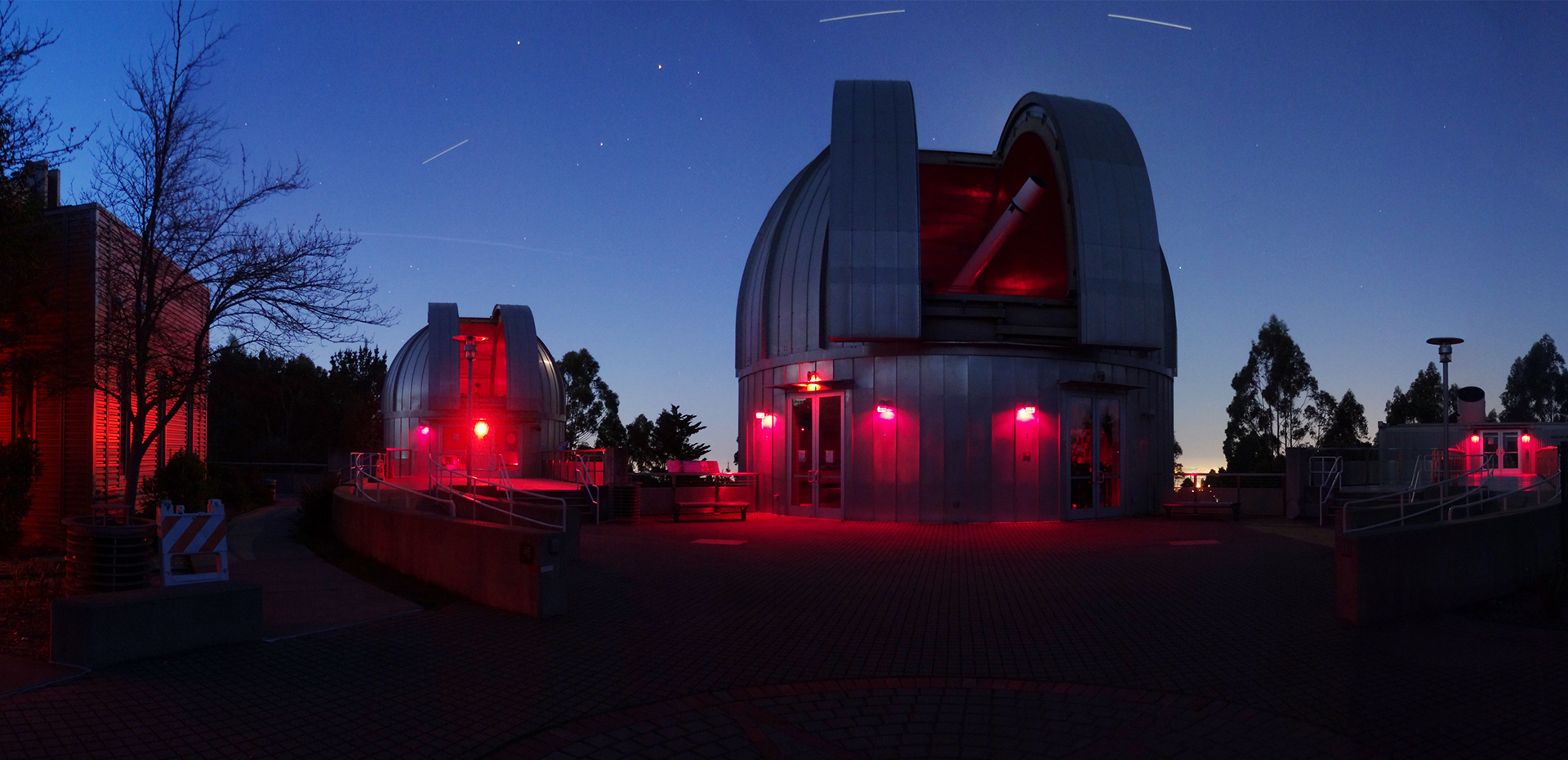
By Nate Gartrell
Every night when the stars come out, we’re reminded of our place in the vast universe, and of the fundamental question that humans have been asking for thousands of years: what else is out there? That’s maybe why the science of astronomy has a certain unparalleled allure to it, and why simple discoveries about the chemistry of celestial objects or discoveries of new planets instantly make headlines around the world.
At Oakland’s Chabot Space and Science Center, researching these mysteries and giving the public an accessible, up-close view of outer space has been a year-round focus since 1883, when it opened as an observatory in the East Bay. It is home to the largest refractor telescope west of the Mississippi—one of three tremendous telescopes at the center—as well as a planetarium, a publicly accessible observatory, and dynamically changing exhibits. From the 1880s till the turn of the century, it served as the official timekeeper for the Bay Area, and in 1970, it played a little-known key role in the rescue of the nearly disastrous Apollo 13 lunar mission.
“There is an innate curiosity in space exploration, and we use that spark of curiosity to ignite learning,” said Mary Catherine Frantz, a marketing associate with the Chabot Space and Science Center. “By creating opportunities to experiment, tinkering and dive into topics, we create the next generation of discovery.”
Chabot is preparing to soon celebrate their 20th year at its Skyline campus, but there are still plenty of events on the horizon for 2019, which are expected to draw thousands of folks. They range from opportunities to witness rare astronomical happenings to the straight-up whimsical, like their upcoming First Friday that focuses on the Chemistry of Candy or their August Bubble Festival.
“BubbleFest was exactly what it sounds like,” Frantz laughed. “We had bubble blowing stations, world-renowned bubble performers, robots that can blow bubbles and other engaging and fun activities that the entire family can get into.”
It is also well known for regular “First Friday” events, with a new theme on the first Friday of each month, centered on a new and exciting theme each month.
“Our First Fridays remain publicly accessible with free parking and a low-cost night of activities for everyone to enjoy… there are always new activities, a new theme, and of course the ability to go and see the telescopes,” she continued.
The next First Friday, in November, will focus on what astronomers do at night when they aren’t stargazing: sleep.
“It’s all about the science of sleep. We take a topic that creates interest and then use engaging activities that bring relevance to STEM concepts. We’re doing some hands-on activities, listening to a bedtime story, and we’re encouraging people to come in their pajamas,” Mary Catherine said.
There is a healthy mix of annual celebrations and events, each typically inspired by the ever-changing sky. For instance, on November 11th, Chabot is holding a morning event to celebrate a rarity: the planet Mercury will briefly pass across the sun, and the public is invited to view this in real-time from 7:30 a.m. to 10:30 a.m. It won’t happen again for more than 20 years.
Chabot is an excellent gathering spot for a variety of astronomical events, with a destination more removed from light pollution and astronomers there to answer questions.
“We just had a full moon on Friday the 13th, and that was a really exciting occurrence that won’t happen again for decades,” Mary Catherine said. “To bring people together to experience celebrate those moments creates a sense of community among lovers of astronomy and science as a whole.”
On October 26th, Chabot is holding a Starlight Gala, to benefit its youth educational program. Supporters of science and community leaders will come together for dinner and a chance to celebrate their Champions of Science awardees, Dr. Yvonne Cagle and Dr. Eugene Tu. Afterwards, the 21+ Starstruck Costume Party is shaping up to be the biggest Halloween party in the Bay Area, stepping into the mysterious world of alchemy with a laser show, performers, a unique dance floor and inspired drinks.
Chabot is known for its many exhibits and immersive educational programs geared toward youth, like its exhibit, Project Create that hosted summer activities for early learners.
“We’re working on creating new experiences geared toward early learners that are creative and exciting and different. Everything from building an earthquake-proof structure to experimenting with color to taking a look through microscopes at creepies and crawlies in compost,” Mary Catherine said. “We are always opening up something new and fun for early learners that is hands-on and dynamic, but still ties into STEM and STEAM learning.”
Chabot is also home to three of the most important publicly accessible research tools in the Bay Area: its mighty telescopes, two of which are more than a century old. Every week, anyone can come to check them out. If you’re interested, go to Chabot any Friday or Saturday, weather permitting, from 7:30 p.m. to 10:30 p.m.
“We are the only science center on the West Coast that provides free weekly access to our research-class telescopes,” Mary Catherine said.
Chabot’s history dates back to the Reconstruction era when Oakland’s then-school superintendent decided that the city should have its own world-class telescope, after observing a similar device at a high school in Philadelphia. That led to the 1883 construction of the eight-inch refracting telescope (the term refers to the type of lens), known as “Leah” (pronounced like the Star Wars princess). The telescope is still in existence today and was followed by telescopes “Rachel” in 1914, and the center’s biggest and most powerful by far—the 36-inch reflecting telescope “Nellie”—in 2003.
The telescopes have had homes in San Francisco, as well as Chabot’s previous Oakland home on Mountain Boulevard. Because people discovered that Chabot was built on top of the Hayward Fault, it was relocated to its current Skyline Boulevard location in August of 2000 (lunar explorer Buzz Aldrin was at the grand opening).
In 1970, the Chabot observatory came to the rescue of Apollo 13 astronauts Jim Lovell, Jack Swigert, and Fred Haise, after an overlooked flaw in the aircraft caused a short mid-mission, leading to the destruction of an oxygen tank and nearly causing the aircraft to explode in outer space. Instead, the crew was able to return home by orbiting the moon and using its gravity to slingshot the damaged aircraft back to Earth. As Apollo 13 began to emerge from the dark side of the moon, NASA needed to know its precise location. As luck would have it, Chabot’s Oakland observatory was the only place in NASA’s network with clear enough skies to spot the spacecraft on that April day.
“Chabot got the call saying they needed the precise location,” Mary Catherine said. “We brought together the volunteers, college students, and astronomers on-site and they were able to locate it … To be a part of that moment in history was fantastic.”
Nowadays, in Chabot’s Challenger Learning Center, visitors can recreate lunar missions and other ventures into space, in a space flight simulator that is usually reserved for bigger groups. It’s typically available for school field trippers, but Chabot also holds an annual Valentine’s Day event at the Challenger Learning Center.
“Couples will come together for a glass of champagne and a chance to go into space every Valentine’s Day,” Mary Catherine said. “We’re always looking for new fun ways to be a gathering place for the community.”
Chabot Space and Science Center is located at 10000 Skyline Boulevard in Oakland. It is open Wednesday through Sunday, from 10 a.m. to 5 p.m., and it is closed on Mondays and Tuesdays. For information on upcoming events, admission, and more, call (510) 336-7300, or visit chabotspace.org. You can also “like” them on Facebook at facebook.com/ChabotSpace to follow them for regular updates, and visit chabotspace.org/events/events-listing for a regularly updated event calendar.

Nate Gartrell grew up in Benicia, studied journalism in college, and has written for a handful of media outlets since age 15. He aspires to visit all 30 Major League Baseball stadiums and to hit the trifecta at the horse track.
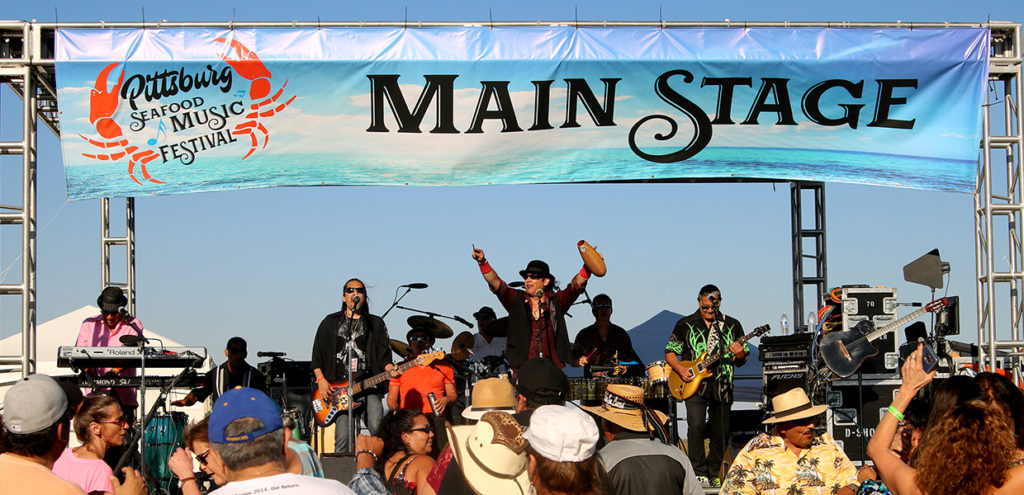
Where crustaceans and charity meet
By Nate Gartrell
Thirty-five years ago, a small group of community organizers and local business owners unwittingly altered the course of history in the East Bay’s Delta-adjacent city of Pittsburg. Their goal was simple: to put together a modest festival that celebrated seafood and music from around the country in a way that paid tribute to Pittsburg’s diverse history. They planned for a couple of hundred people to turn out; instead, they were overwhelmed by a huge crowd of thousands of folks from all over the Bay Area and beyond. From there, the Pittsburg Seafood Festival became a cornerstone of the city, its “can’t miss” event of the year.
“We all know that this is one of the biggest events in the city. We all get to enjoy the great food, the great music, and entertainment,” then-Pittsburg Councilman Jelani Killings, who has since become the Vice-Mayor, said at a public meeting last year. “I encourage everybody to get their tickets early.”
Since its foundation in 1984, Pittsburg Seafood Festivals have cumulatively brought in hundreds of thousands of people—including internationally-known musical acts—and even more lobsters, crabs, crawfish, catfish, alligator bites, and more, and helped raise lots of money for charitable events in the process. It is by far the biggest festival in Contra Costa County and many call it the staple celebration of the East Bay. Last year’s festival brought in upwards of 20,000 people for the two-day festival, which is why the event’s organizers recommend that you plan out your trip well in advance.
This year, the Pittsburg Seafood Festival will take place on September 7-8, the very first weekend of the month.
“Since (1984), it has grown to become one of Contra Costa County’s largest family events and is now recognized as one of the best festivals in Northern California,” the festival’s website says.
The festival is sponsored by the Pittsburg Chamber of Commerce, with some funding provided by the city, and security provided by the Pittsburg Police Department. (Since 1972, Pittsburg has helped fund Chamber of Commerce events and other programs.)
For whatever reason, anniversaries that end in a five or a zero tend to garner the most attention, and with that in mind, the Chamber of Commerce says it “has big plans to making this 35th Annual Pittsburg Seafood & Music Festival even more special.” Unfortunately, at the time of publication, the festival’s musical lineup was not available. But last year’s festival was headlined by the iconic singer Sheila E., known for her Grammy-nominated 1984 album, The Glamorous Life, as well as collaborations with Prince, Marvin Gaye, Herbie Hancock, and Lionel Richie, to name a few. The lineup also included Caravanserai, the Santana tribute band, as well as more than 20 other thrilling singers and bands who showcased a diverse range of sounds, performing throughout both days on three stages. So, you know, these guys know how to book an act.
Food at the festival is intended to bolster the Pacific fishing industry’s North Coast (which encompasses the Bay Area to Oregon), but many of the festival’s signature items read off like a checklist for a vacation in New Orleans.
“We carefully screen all vendors so as to offer the best variety available at any festival. Visit the Pittsburg Seafood & Music Festival this year and we know you won’t go away hungry or thirsty,” the festival’s website says. “From delicious seafood gumbos, clam chowders, BBQ oysters, steamed muscles, good ol’ craw-fish boils, lobster rolls, Jambalaya to alligator-on-a-stick, calamari, and shrimp creole —all are available for you to sample during the Festival.”
They will have also have a beer garden with football games broadcasting on giant TVs, located near the main stage, with a nice view of the Delta, as well as a wine pavilion with live DJs and dancing, and a “Margaritaville” area that the festival’s website says will offer, “a fun fiesta experience with tons of Latin flare fun, dancing show horses, live salsa music and entertainment, folkloric costume dance performances, and much more!”
Last year, more than 200 vendors set up shop at the festival, including food along with arts and crafts. The organizers try to switch things up from one year to the next, in part so that attendees can try a variety of seafood and BBQ, but also because the Bay Area has more to offer than you can fit into two days. At the time of publication, the Chamber of Commerce was still accepting applications for folks interested in setting up booths. Applications are open to entertainment acts, non-profits, and businesses, as well as food, art, and arts and crafts, and can be filled out by visiting pittsburgseafoodandmusicfestival.com/vendors.
Tickets are $15 at the gate, $12 for kids, and $10 for military veterans, law enforcement officers, and firefighters. Kids 5 years old and younger get in free. But a number of early bird sales are also being offered (a July sale offering tickets from $8-10 just ended). Until the end of August (or the first 10,000 tickets sold, whichever comes first), bundle packs of four, five, and six will be offered for what comes out to $10 per ticket. There is also a business pack, encouraged for employers who want to treat the folks who work for them, which offers a dozen tickets for $99.
It’s not just about seafood, art, and music, either. Within the festival is an entire carnival for the kids, with “super thrilling bungee jumper, wild and wacky water-ballers, a rock climbing wall, pony rides, an adorable petting zoo, whimsical face painting and so much more entertainment for our younger guests,” the festival’s website says.
It wouldn’t be right for a Pittsburg festival not to include some kind of tribute to the Delta, which is known for houseboat parties and a culture of water sports, including some of the best winds in the world, according to multiple professional kiteboarders. This year, there will be jet ski races by Diablo Jet Ski Action, as well as stunt performances of jet skis and kiteboarding. Paddleboard lessons will be available at the nearby Pittsburg Marina.
The Chamber of Commerce also uses the festival to partner with more than 40 important local charity groups, and over the years the festival has helped raise more than $750,000 towards causes that help the community.
This year offers all-free parking options, as well as free shuttles that will show up at set locations every 15 minutes to transport festival-goers. Those who arrive by car are encouraged to park at Los Medanos College Lots A, B, and C. The college campus is located at 2700 East Leland Road. Shuttles will pick up passengers from those three lots.
If you arrive by BART, regular shuttle service is offered at Pittsburg’s BART station, 2099 Railroad Avenue. However, there will be no festival parking here, unless you want to risk getting a ticket.
The Pittsburg Seafood Festival will last from 10 a.m. to 7 p.m. both days. It is located near Old Town Pittsburg by Marina Boulevard. No animals are allowed, other than service animals with paperwork, and no outside alcohol. Tickets went on sale Aug. 1, and can be purchased at pittsburgseafoodandmusicfestival.com. If you purchase tickets online, make sure to remember to print them out and have them ready.
For additional information, including ticket-related questions, call the Pittsburg Chamber of Commerce at (925) 432-7301. You can also follow them on Facebook for regular updates, by visiting: facebook.com/PittsburgSeafoodFestival. To become a sponsor, which includes participation in special acts, and high visibility at the festival (among other perks) visit pittsburgseafoodandmusicfestival.com/become-a-sponsor.
 Nate Gartrell grew up in Benicia, studied journalism in college, and has written for a handful of media outlets since age 15. He aspires to visit all 30 Major League Baseball stadiums and to hit the trifecta at the horse track.
Nate Gartrell grew up in Benicia, studied journalism in college, and has written for a handful of media outlets since age 15. He aspires to visit all 30 Major League Baseball stadiums and to hit the trifecta at the horse track.
Thrive & Jive for the Big 25
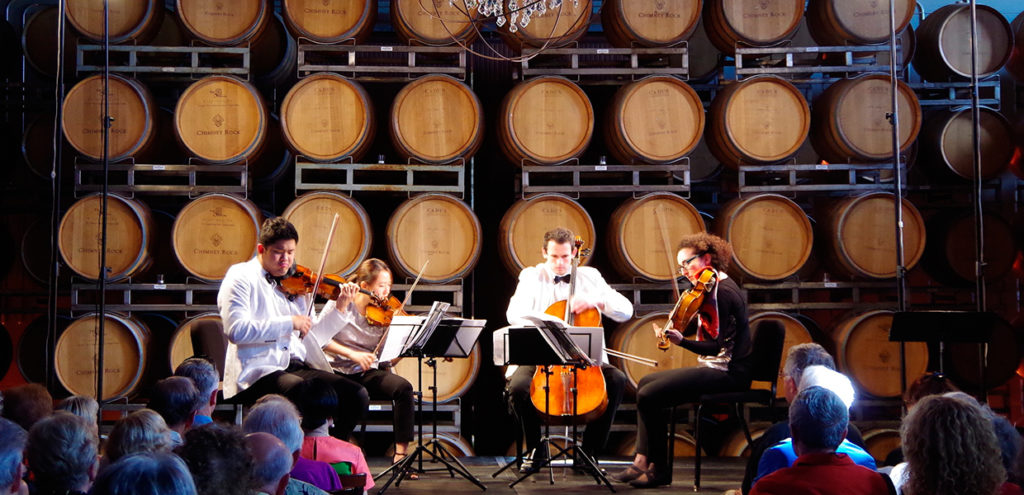
It’s the Napa’s Chamber Music Festival’s silver anniversary
By Matt Larson
Is it August yet? If so, at your earliest convenience, start planning to attend Napa’s 25th Anniversary Season of Music in the Vineyards. Four weeks of chamber music concerts await you, performed by professional musicians in an exquisite setting, resulting in an experience that is quite unique, to say the least.
“Music in the Vineyards is a magical combination of incredibly talented musicians, an engaged and intimate audience, Napa Valley wine, and a wine country setting,” said PR Manager Natasha Biasell. “That combination doesn’t happen anywhere else.”
As chamber music is defined as being just that—music played within an often-small chamber—most of their concerts sell out every season, but not every one of them. Naturally, the smaller venues sell out more quickly, but some of the larger venues, with 200+ seating capacity, tend to remain open until showtime. Either way, reserve your tickets ASAP at musicinthevineyards.org.
What you’ll encounter at Music in the Vineyards may be unlike any concert that you’ve experienced. Classical music, played by a soloist, duo, trio or quartet (as opposed to a full orchestra), in a smaller performance venue (as opposed to a large concert hall) is something anyone and everyone can enjoy.
“Our chamber music concerts are held at intentionally intimate venues,” Natasha explained. “We’ve got a really incredible lineup of not just individual artists, but ensembles; returning favorites and some new ensembles as well. And every concert is different.”
Settings for this year’s concerts include a wide variety of Napa Valley venues, including Frog’s Leap Winery, Domaine Carneros, Robert Mondavi Winery, Silverado Vineyards, Charles Krug Winery, Stag’s Leap Wine Cellars, and many more.
It all kicks off on July 31st at The Walt Disney Family Museum, and concerts are held every Wednesday, Thursday, Friday, Saturday, and Sunday, until the final concert on Sunday, August 25th at Inglenook Winery, closely followed by the event’s official 25th Birthday Party at Tre Posti.
We asked Natasha what has changed the most over the past 25 years of Music in the Vineyards, and what has stayed the same. “In one way, we have grown and developed in terms of our scope, and our quality of music,” she said. “The quality of the musicians that we are now able to attract to our festival is impressive.” But the experience as a whole, she added, is just as special as it’s always been. “On the other side of the coin, the intimacy and the uniqueness of our festival has remained the same.”
Audience members really get to know these musicians; compared to being one of thousands in an oversized venue, being one of a hundred or so at a Music in the Vineyards event makes the experience a bit more personal. And that personal connection goes a bit deeper than you might expect.
“One of the unique offerings that we provide for musicians is that we set them up in houses, with Napa Valley residents,” Natasha said. “It’s one of the reasons why we think they love to come back year after year! They actually get to interact with residents of the Napa Valley and create lasting friendships.”
Pairing musicians with local residents isn’t something new, by the way. In fact, it has been part of the process since the very beginning. “So instead of sticking folks in a hotel, we put them with people who live in the Napa Valley, know the Napa Valley, and who can really introduce them to the heart of what the Napa Valley is all about,” she added. “We believe that actually adds to the magic of that intimacy between the performance and the audience, because you’ve got people on stage who are actually staying in the homes of some of the folks in the audience!”
A new tradition for Music in the Vineyards is the Apprentice String Quartet Program, with 2019 being only its second year. Designed to help a pre-professional ensemble that has been active somewhere throughout the country, this year’s winner, chosen by a national audition, is Indiana-based 2nd St. Quartet.
“They’ll come to Napa and will be mentored at the festival,” Natasha said. “And as they’re learning and practicing and growing, they’ll be performing at local venues in the Napa Valley.” In collaboration with select Music in the Vineyards musicians, the 2nd St. Quartet will perform free concerts in local retirement communities, Boys & Girls Clubs, the Veterans Home, Napa School of Music, The Cameo Theater, and the Yäger Galerie.
2019 also marked the sixth year of the Solo Instrumental Competition, created to foster instrumentalists in grades 10-12 who reside in the greater Bay Area. It was held on March 9th, and winners were awarded a cash prize with the opportunity to perform at a recital as part of the festival. The Competition Winners Recital, including both the 2nd St. Quartet and the winners of the Solo Instrumental Competition, will be held on Saturday, August 3rd at 2 p.m. at Napa Valley College.
Commitment to the local community is obviously yet another aspect of the festival that has continued to grow over the past 25 years. Music in the Vineyards also provides a scholarship program designed to help pay for music lessons for young Napa Valley musicians, done in partnership with the Napa Valley Youth Symphony.
The Apprentice String Quartet program is supported by the Napa Valley Performing Arts Foundation, with matching funds from the Napa County Arts, Culture and Heritage Arts Program, City Council of St. Helena, and donors to their Community Outreach Program.
Partnerships with local businesses, nonprofits, residents, and restaurants, have all played a huge role in the success of this event. Natasha gives a special shout out to the venues themselves. “We get to play at incredibly gorgeous venues across the valley, who give us their space free of charge because of their connection to the art community. We are so grateful to these venues for partnering with us.”
There are many, many concerts to choose from over the four-week Music in the Vineyards extravaganza. If you are having trouble deciding which one to attend, Natasha recommends getting tickets to the concert at Markham Vineyards on Wednesday, August 14th, featuring the Pacifica Quartet, now in their 14th season with the festival. “They are a favorite!” she exclaimed. “Their energy, their style of performance, and their love of the Napa Valley is inherent and clearly present.”
Other dates to note are the Bravissimo! Gala on August 10th, Free Open Rehearsals on Thursdays at Napa Valley College, Pre-Concert Talks on August 8th, 15th and 22nd, and of course the official dates for the Napa Valley Chamber Music Festival: July 31st through August 25th.
To purchase tickets and for additional information, head to musicinthevineyards.org. Give them a call at (707) 258-5559 or email them at info@musicinthevineyards.org.
If you haven’t been to Napa in a while and are in search of a new experience, make some calls, texts, faxes—find a date! And make it out in time to celebrate the 25th anniversary of Music in the Vineyards.
-
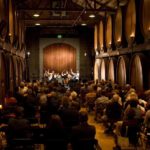
-
Photo by Chick Harrity, submitted by Music in the Vineyards
-
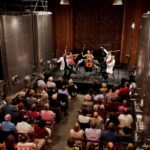
-
Photo by Chick Harrity, submitted by Music in the Vineyards
-
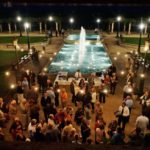
-
Photo by Chick Harrity, submitted by Music in the Vineyards
-
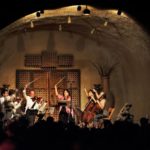
-
Photo by Chick Harrity, submitted by Music in the Vineyards
-
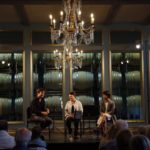
-
Submitted by Music in the Vineyards
-
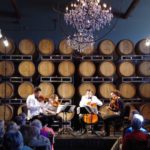
-
Submitted by Music in the Vineyards
 Larson is an actor/comedian/director from Vallejo who lives a double life between the Bay and LA. When he’s not writing for Local Happenings Magazine he could be editing a short film or working on his next rap album—who knows!
Larson is an actor/comedian/director from Vallejo who lives a double life between the Bay and LA. When he’s not writing for Local Happenings Magazine he could be editing a short film or working on his next rap album—who knows!
Keep up with all things Larson at: www.MarsLegstrong.com.
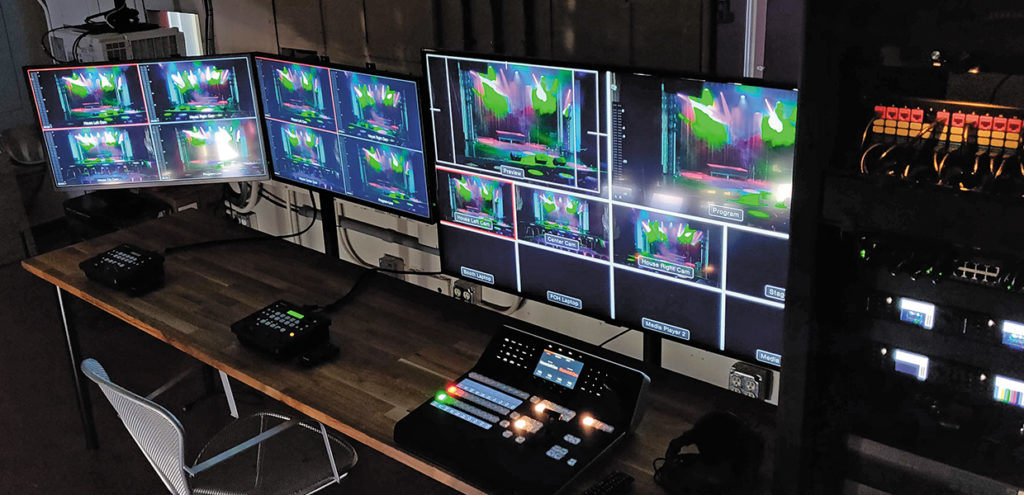
By Nate Gartrell
The Empress Theatre in Vallejo is probably the region’s most celebrated entertainment venue. Named a Vallejo Landmark in 1990, the Empress’ enduring past includes withstanding a devastating fire, the Loma Prieta earthquake, several years of inactivity, half a dozen name changes, and many new owners. If its 108-year-old walls could talk, they’d be able to recite an Encyclopedia’s worth of plays, musical compositions, and movies.
Now, the Empress is better than ever, thanks to the latest series of new features: a city-funded renovation of its sound and lighting systems. The improvements are described by those familiar with the theater as a game-changer, “unbelievable,” and an opportunity to book greater acts.
The invigorating new LED lighting system allows crews at the Empress to do things that weren’t possible before. The system cost $150,000, paid for by grants from the City of Vallejo, which owns the theater. It allows for electrifying displays of lights in all sorts of colors and designs, which—as Empress staff recently demonstrated at a sneak preview in June—can stand alone as its own show. The June demonstration was evocative of a laser show, and featured flashing colorful lights and movement as the songs “Foreplay,” by Boston and “Frankenstein,” by The Edgar Winter Group boomed through the sound system. For those who missed this early display, a video of it can be found on the city’s YouTube page (under the username “CityofVallejo.” It is entitled “Empress Lighting Upgrade.” (https://youtu.be/0YrVNzqPwN8)
“I believe the opportunity for this small financial investment will yield results tenfold both in offering an improved experience for theatre-goers as well as the youth training programs the Empress is looking to offer,” Vallejo City Manager Gregory Nyhoff said. “I was honored to be invited to the sneak preview. It exceeded all expectations. I encourage the community to find a show of their liking and go experience it for themselves.”
Early feedback of the new lighting and sound has contained equally high praise. City officials, council members and local supporters of the arts who attended the initial showcasing described it as a night-and-day shift, saying they were blown away and several of them predicting that the changes will help the theater book bigger acts in coming years. The staff of the Empress compares the lighting system to a kid having a new toy to play with on their birthday and point out the changes are part of a new era for the Empress, which in recent years has gotten some badly-needed stability.
Known previously as the Fox Senator, the Vallejo Theater, the Republic, and the Crest, the Empress returned to its original name in 1980, following a restoration that followed nearly 20 years of inactivity at the theater. It has remained “the Empress” ever since and is now owned by the City of Vallejo and managed by the Vallejo Community Arts Foundation, a California Public Benefit Corporation designed to bolster local art programs and events. Built in 1911, it now seats nearly 500, less than half its original capacity of 1,100 (before it was nearly destroyed by a fire in the 1930s). It spent several years as a movie theater in the 1950s, and still occasionally screens films, but its main purpose is to showcase live performances. Its current general manager, Kevin Frazier, is an accomplished saxophone player who has shared the stage with Huey Lewis (among other musical legends) and knows what it takes to build a successful theater, in both the business world and in terms of acoustics. Each month the Empress hosts a wide array of events, from film clubs and stand-up comedy to classical music to rock and jazz concerts. In early 2017, the Vallejo Symphony announced it was returning to the Empress after several years performing at the Hogan Middle School auditorium. To help accommodate the symphony (and as part of the revitalized sound system), the theater installed new microphones across the stage.
The Empress’ upcoming acts in August and September include tributes to Fleetwood Mac, Lynyrd Skynyrd, the Eagles, and the Bee Gees, as well as the blues/tango intersection group María Volonté / Blue Tango Project, Akira Tana and Otonowa, presented by the Vallejo Jazz Society, and Richmond singer Duane Patton. In late August, the Empress will host one of the most popular events of the year, the San Francisco International Piano Festival.
“Now in its 3rd season, the Festival has quickly become one of the most exciting and engaging musical events in the Bay Area and has attracted international attention through its world-class artists, unique programming, and friendly rapport between performers and audience,” the Empress’ website says.
The new sound and lighting improvements have also opened the door for new masterclasses to be taught in the Empress. Starting September 9, classes will be offered in acting, digital lighting, and digital filmmaking. The digital lighting class will be taught by the Empress’ own Lighting Director, Carl Brooks, and all three classes will provide students with, “an opportunity to learn valuable skills to get ahead in today’s entertainment industry,” the theater’s website says. To sign up, visit www.emc2.empresstheatre.org.
The Empress is located in downtown Vallejo at 330 Virginia St. Its box office is open from 11 a.m. to 4 p.m., Tuesday thru Saturday, and starting one hour before every show. If you’re interested in buying tickets, you can also call the box office during open hours at (707) 552-2400. The Empress can also be reserved for private parties, weddings, corporate meetings, film screenings, and other events. For more information, to volunteer, check the schedule, sign up for classes, and more, visit www.empresstheatre.org.
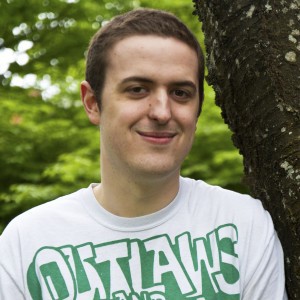 Nate Gartrell grew up in Benicia, studied journalism in college, and has written for a handful of media outlets since age 15. He aspires to visit all 30 Major League Baseball stadiums and to hit the trifecta at the horse track.
Nate Gartrell grew up in Benicia, studied journalism in college, and has written for a handful of media outlets since age 15. He aspires to visit all 30 Major League Baseball stadiums and to hit the trifecta at the horse track.



